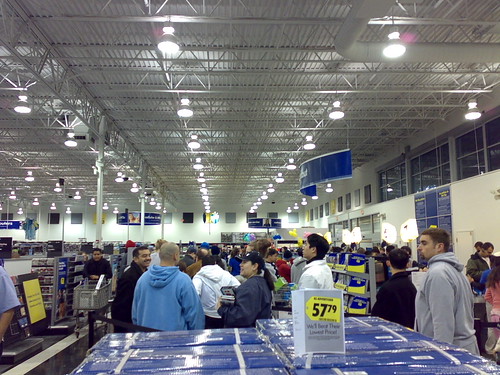
Artist Peter Maslow at work in his Industry City studio.
By Stuart White
For many, the phrase “artists’ community” conjures a mental image that would be best described as “nudist colony-meets-gallery opening.”
But in Sunset Park’s Industry City, a 6.5 million-square foot industrial complex on Brooklyn’s bleak waterfront, a very different type of artists’ community is taking root.
The facility’s management hopes that placing creative types in close proximity with their industrial counterparts will eventually result in the vertical integration of design and production, and in turn, foster productivity and innovation. However, what the facility’s managers see as a step toward a new industrial model could be viewed as the first signs of gentrification in Sunset Park.
In an earlier post, this blog examined rising real estate prices in the neighborhood as a potential indicator of what’s in store for Sunset Park. That data, in conjunction with the neighborhood’s growing population of artists, seems fit into the equation of New York’s most famous gentrification trend: the SoHo Effect (a phenomenon that isn’t unique to New York City).
“When the artists and a creative sector come into an area, even if it’s kind of a rundown area, that precipitates changes, and that seems to be kind of a repeatable pattern,” said Audrey Anastasi, who co-directs an independently run gallery called Tabla Rasa with her husband Joe.
Tabla Rasa itself could be interpreted as a metaphor for the changes taking place in Sunset Park. Wedged between an auto mechanic and a light industrial facility that applies baked powder coatings to metal goods, the tastefully appointed gallery seems a bit out of place.
However, Joe and Audrey Anastasi have no desire to see Sunset Park become the next Chelsea, and despite what happened in SoHo and other Brooklyn neighborhoods like Williamsburg, Joe doesn’t see Sunset Park’s artists as having the same disruptive effect.
“The artists that are coming into the community seem to actually be buying into the community,” he said. “So as a result, it’s not the same kind of displacement as has happened in other neighborhoods.”
Peter Maslow, a painter who rents studio space in Industry City, shares their sentiment, but worries that as the artists’ community grows and gains recognition developers will have no choice but to start turning dilapidated warehouses into luxury condos.


